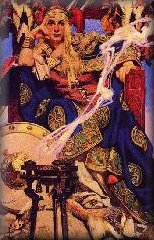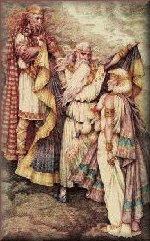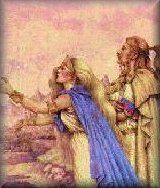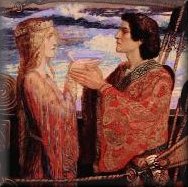|
|
|

|
|

 Whereas
the fairy woman is young and beautiful, Caeilte himself is old and withered.
When Patrick enquires of this, Caeilte tells him that:
Whereas
the fairy woman is young and beautiful, Caeilte himself is old and withered.
When Patrick enquires of this, Caeilte tells him that:
 These
distinct categories of sidhe beings ties in with the testimonies of seers
who divide the sidhe into wood spirits, water spirits, air spirits and
so on, the elemental spirits of each place.
These
distinct categories of sidhe beings ties in with the testimonies of seers
who divide the sidhe into wood spirits, water spirits, air spirits and
so on, the elemental spirits of each place.L. MacDonald DALRIADA MAGAZINE 1993
![]()
![]()